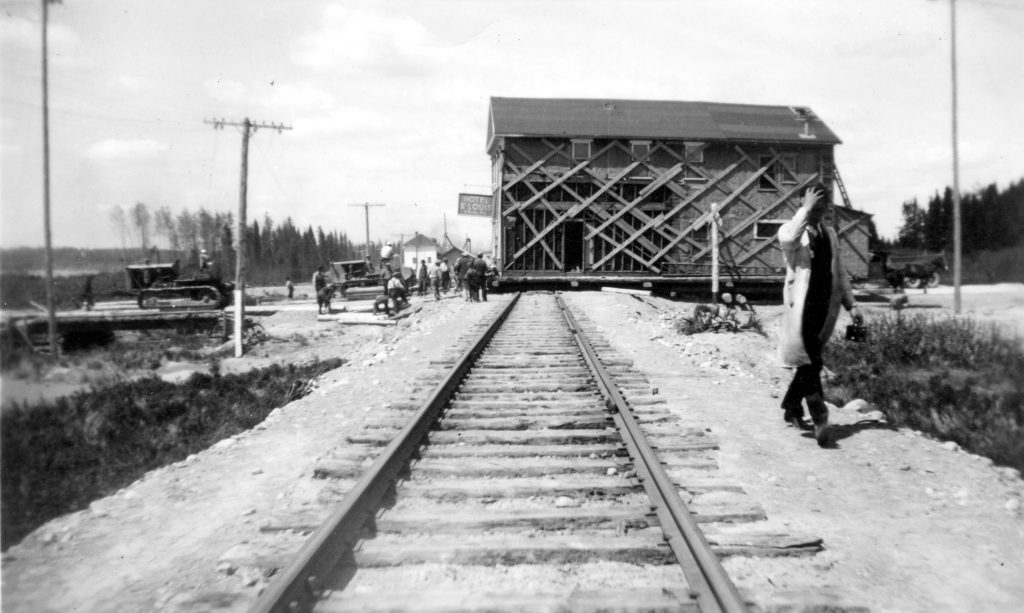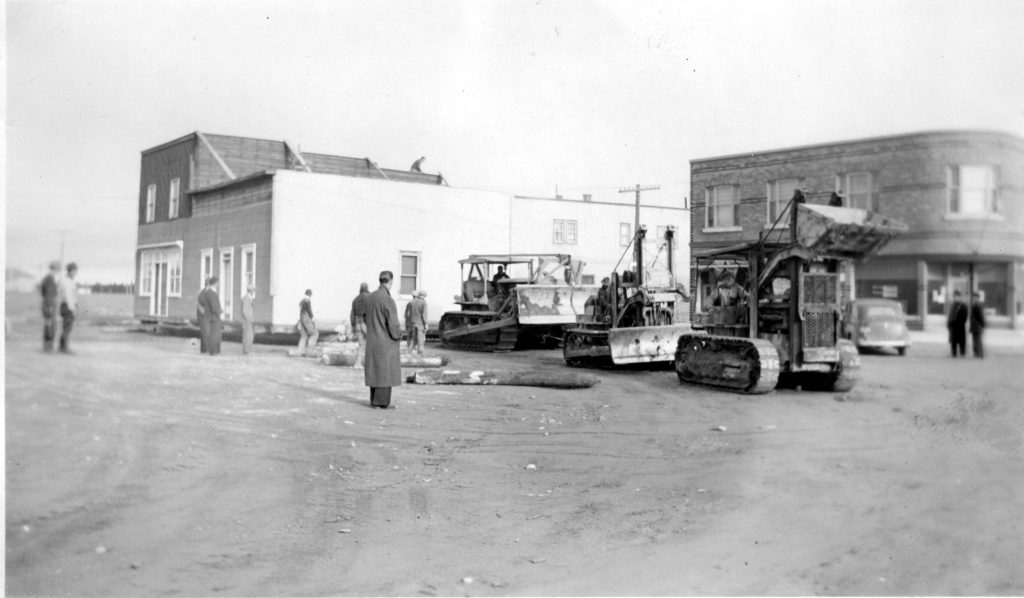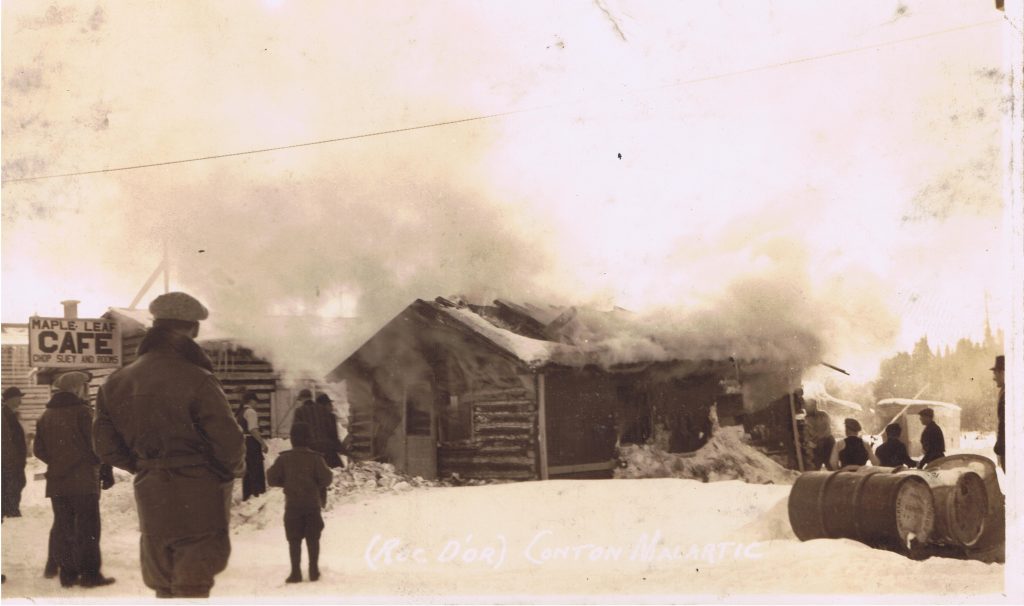The End of Roc-d’Or

Relocation of Hotel St-Louis from Roc-d’Or to Malartic in 1940 (Société d’histoire de Malartic, Antoine Bélanger fonds).
In early 1943, the Government orders the destruction of Roc-d’Or. It comes about eight years into settlement. The hope of weakening the Government’s resolve prompts a certain resistance.
Regional newspapers publish open letters. Quebec Premier Adélard Godbout receives a petition. A delegation from Roc-d’Or travels to Quebec City.
Though their resolve does not waver, public officials prove to be somewhat flexible. Rather than expulsion without notice, officials grant multiple extensions. The government hopes the squatters will go willingly to the well-organized Malartic municipality. Surely preferable to remaining in this “unhealthy” village slated to destroyed!
Rose-Aimée Francoeur-Mask talks about moving her house:
Listen to the interview with transcript.
Some owners must abandon their houses because they are not sturdy enough to be moved. Transportation is only possible for more solid buildings.

A residence being pulled by three bulldozers in 1942 (Société d’histoire de Malartic, Laurent Chartier fonds).
The first departures from Roc-d’Or in summer of 1943 spark sarcasm, insults, and threats. Still, a great number of houses are moved, according to the Inquiry Report. Some are “among the largest and most beautiful” built at that time.


